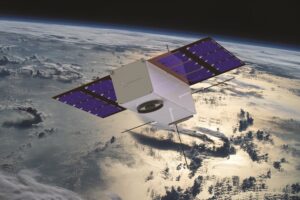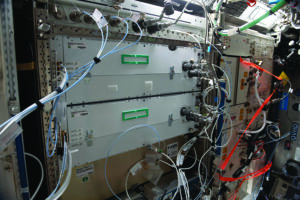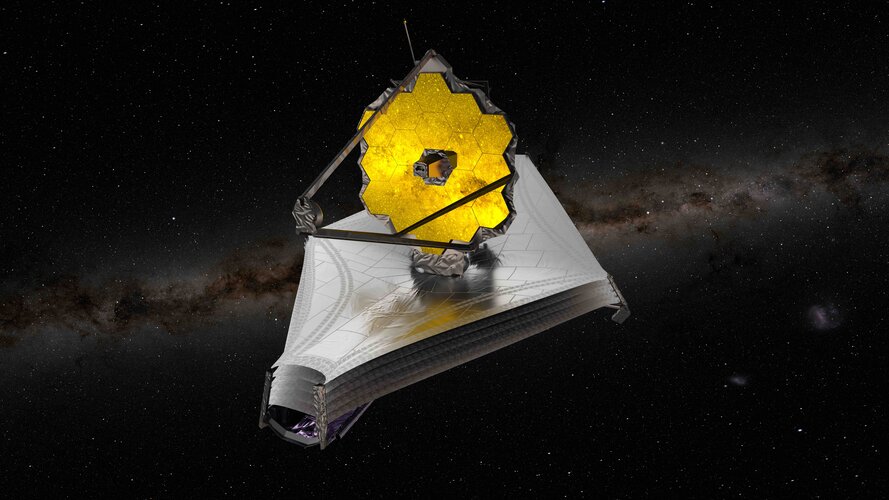OneWeb and Hughes to bring orbital broadband service to India
Tuesday, 25 January 2022 06:43 OneWeb, the low Earth orbit satellite communications company, and Hughes Network Systems LLC has announced a strategic six-year Distribution Partner agreement to provide low Earth orbit (LEO) connectivity services across India. The arrangement between OneWeb and Hughes Communications India Private Ltd. (HCIPL), a joint venture between Hughes and Bharti Airtel Limited, follows the Memorandum of U
OneWeb, the low Earth orbit satellite communications company, and Hughes Network Systems LLC has announced a strategic six-year Distribution Partner agreement to provide low Earth orbit (LEO) connectivity services across India. The arrangement between OneWeb and Hughes Communications India Private Ltd. (HCIPL), a joint venture between Hughes and Bharti Airtel Limited, follows the Memorandum of U SpaceX ISS freighter splashes down off Florida
Tuesday, 25 January 2022 06:43 A SpaceX Dragon capsule that had transported supplies and experiments to the International Space Station splashed down along the coast of Florida on Monday afternoon.
The capsule's four main parachutes were deployed shortly after 4 p.m. EST, and splashdown was confirmed two minutes later, the company said.
The freighter delivered some 4,900 pounds of science experiments and stati
A SpaceX Dragon capsule that had transported supplies and experiments to the International Space Station splashed down along the coast of Florida on Monday afternoon.
The capsule's four main parachutes were deployed shortly after 4 p.m. EST, and splashdown was confirmed two minutes later, the company said.
The freighter delivered some 4,900 pounds of science experiments and stati Sols 3362-3363: Sedimentologist's Delight
Tuesday, 25 January 2022 06:43 After a few sols of challenges that prevented us from getting close-up MAHLI imaging of this dark outcrop in front of us, today we were finally able to plan the contact science that we were hoping for.
Yesterday there was a small rock under the right rear rover wheel, so we had to kick that rock to the curb to get into a stable position for using the rover arm. This morning's downlink data
After a few sols of challenges that prevented us from getting close-up MAHLI imaging of this dark outcrop in front of us, today we were finally able to plan the contact science that we were hoping for.
Yesterday there was a small rock under the right rear rover wheel, so we had to kick that rock to the curb to get into a stable position for using the rover arm. This morning's downlink data Japan’s H3 rocket further delayed by engine woes
Tuesday, 25 January 2022 00:02
After spending most of 2020 and all of 2021 struggling with the expendable H3’s novel LE-9 main engine, officials with the Japan Aerospace Exploration Agency (JAXA) told reporters last week that the H3 will not be ready to launch by the end of March as previously hoped.
RUAG Space agrees AI partnership for satellite supercomputer
Monday, 24 January 2022 22:03
Switzerland’s RUAG Space said Jan. 24 it is teaming up with a software provider to run artificial intelligence solutions on its Lynx, which it says is the most powerful commercially available onboard satellite computer.
The post RUAG Space agrees AI partnership for satellite supercomputer appeared first on SpaceNews.
RUAG Space enters AI partnership for satellite supercomputer
Monday, 24 January 2022 22:03
Switzerland’s RUAG Space said Jan. 24 it is teaming up with a software provider to run artificial intelligence solutions on its Lynx, which it says is the most powerful commercially available onboard satellite computer.
Living on the edge: Satellites adopt powerful computers
Monday, 24 January 2022 20:04
Spacecraft operating closer to Earth are adopting state-of-the-art onboard processors. Upcoming missions will require even greater computing capability.
The post Living on the edge: Satellites adopt powerful computers appeared first on SpaceNews.
NOAA seeks continuity of space weather observations
Monday, 24 January 2022 20:03
The National Oceanic and Atmospheric Administration is looking ahead to a future generation of space weather instruments.
The post NOAA seeks continuity of space weather observations appeared first on SpaceNews.
Hewlett Packard Enterprise’s space station computer is in demand
Monday, 24 January 2022 19:52
Mark Fernandez, principal investigator for Spaceborne Computer-2, sees a promising future for space-based computing.
The post Hewlett Packard Enterprise’s space station computer is in demand appeared first on SpaceNews.
Extraordinary black hole found in neighboring galaxy
Monday, 24 January 2022 19:07
Astronomers have discovered a black hole unlike any other. At one hundred thousand solar masses, it is smaller than the black holes we have found at the centers of galaxies, but bigger than the black holes that are born when stars explode. This makes it one of the only confirmed intermediate-mass black holes, an object that has long been sought by astronomers.
"We have very good detections of the biggest, stellar-mass black holes up to 100 times the size of our sun, and supermassive black holes at the centers of galaxies that are millions of times the size of our sun, but there aren't any measurements of black between these.
Webb telescope reaches destination, 1 mn miles from Earth: NASA
Monday, 24 January 2022 18:58
The James Webb Space Telescope has fired its thrusters and reached its orbital destination around a million miles (1.5 million kilometers) away from our planet, NASA said Monday, a key milestone on its mission to study cosmic history.
At around 2:00 pm Eastern Time (1900 GMT), the observatory fired its thrusters for five minutes in order to reach the so-called second Lagrange point, or L2, where it will have access to nearly half the sky at any given moment.
"Webb, welcome home!" said NASA Administrator Bill Nelson in a statement.
"We're one step closer to uncovering the mysteries of the universe. And I can't wait to see Webb's first new views of the universe this summer!"
Webb has arrived at L2
Monday, 24 January 2022 18:30
Today, at 20:00 CET, the James Webb Space Telescope fired its onboard thrusters for nearly five minutes (297 seconds) to complete the final post launch course correction to Webb’s trajectory. This mid-course correction burn inserted Webb toward its final orbit around the second Sun-Earth Lagrange point, or L2, nearly 1.5 million kilometres away from Earth.
Webb's journey to L2 Is nearly complete
Monday, 24 January 2022 15:26
Even after James Webb Space Telescope launch, astronomers still on the edge of their seats
Monday, 24 January 2022 15:10
So far, 2022 may feel like a mixed bag—however, if you're an astronomer this year has already been exciting. That's because December 25, 2021 brought a highly anticipated gift, two decades in the making, with the launch of the James Webb Space Telescope (JWST).
Now the telescope is en route to its final location, called L2 (Lagrange Point 2). That's nearly 1 million miles away, so it will be a few anxious months of anticipation for astronomers and the rest of us here on the pale blue dot.
Jon Trump, associate professor in the Department of Physics, is one of those excited astronomers, and he met with UConn Today to discuss what to expect from JWST in the months ahead.
This Christmas was an extra special one for astronomers with the launch of JWST. What was it like?
I joined my collaborators for a virtual watch party for the 6:20am launch (CST). I was awake before my kids—they were a little frustrated that I didn't wake them up.
Phase Four and Orbit Fab to work on Maxwell engine refueling
Monday, 24 January 2022 15:00
Propulsion startup Phase Four has signed a memorandum of understanding with satellite refueling startup Orbit Fab aimed at preparing future Phase Four Maxwell engines for on-orbit refueling.
The post Phase Four and Orbit Fab to work on Maxwell engine refueling appeared first on SpaceNews.

